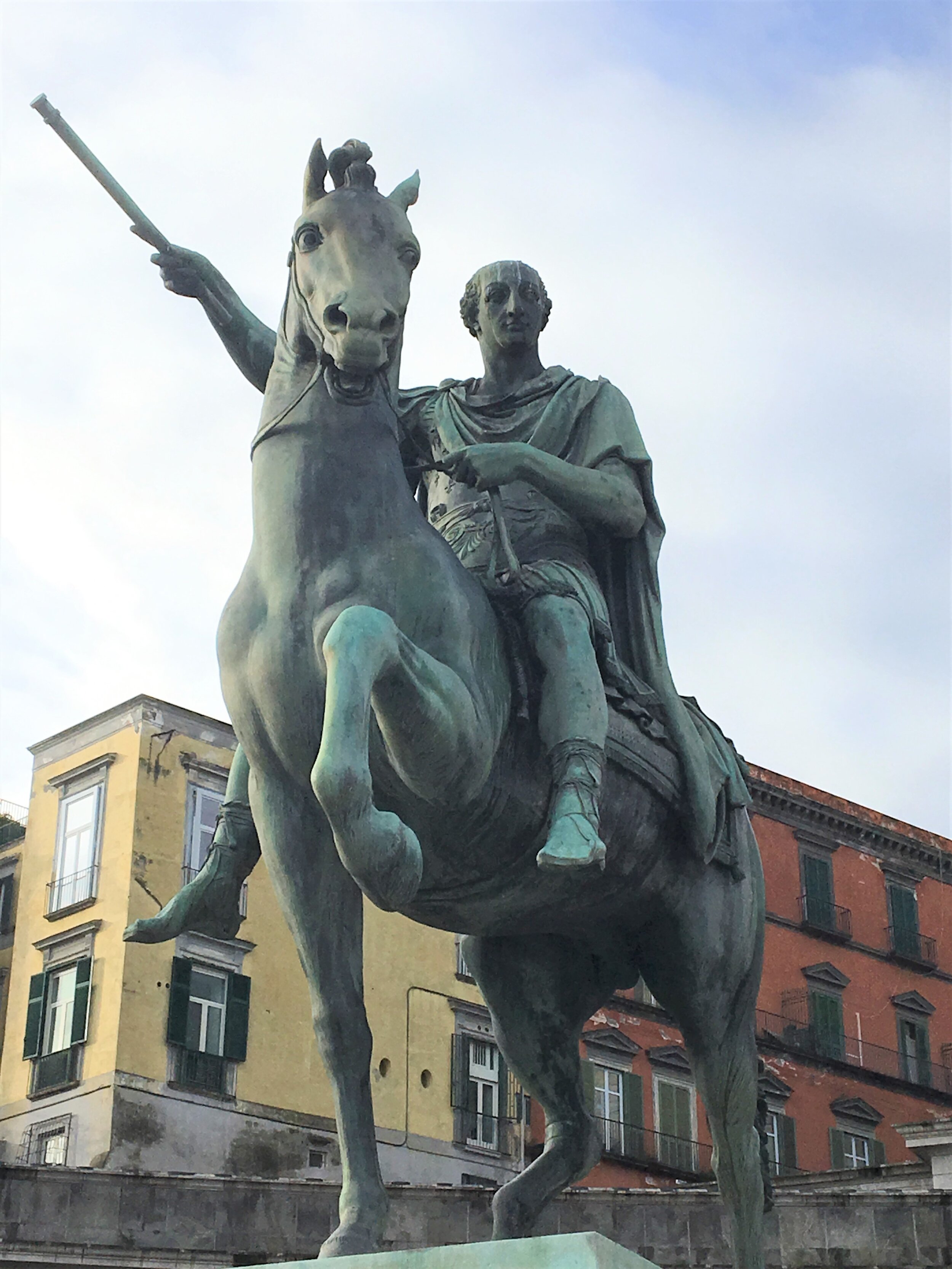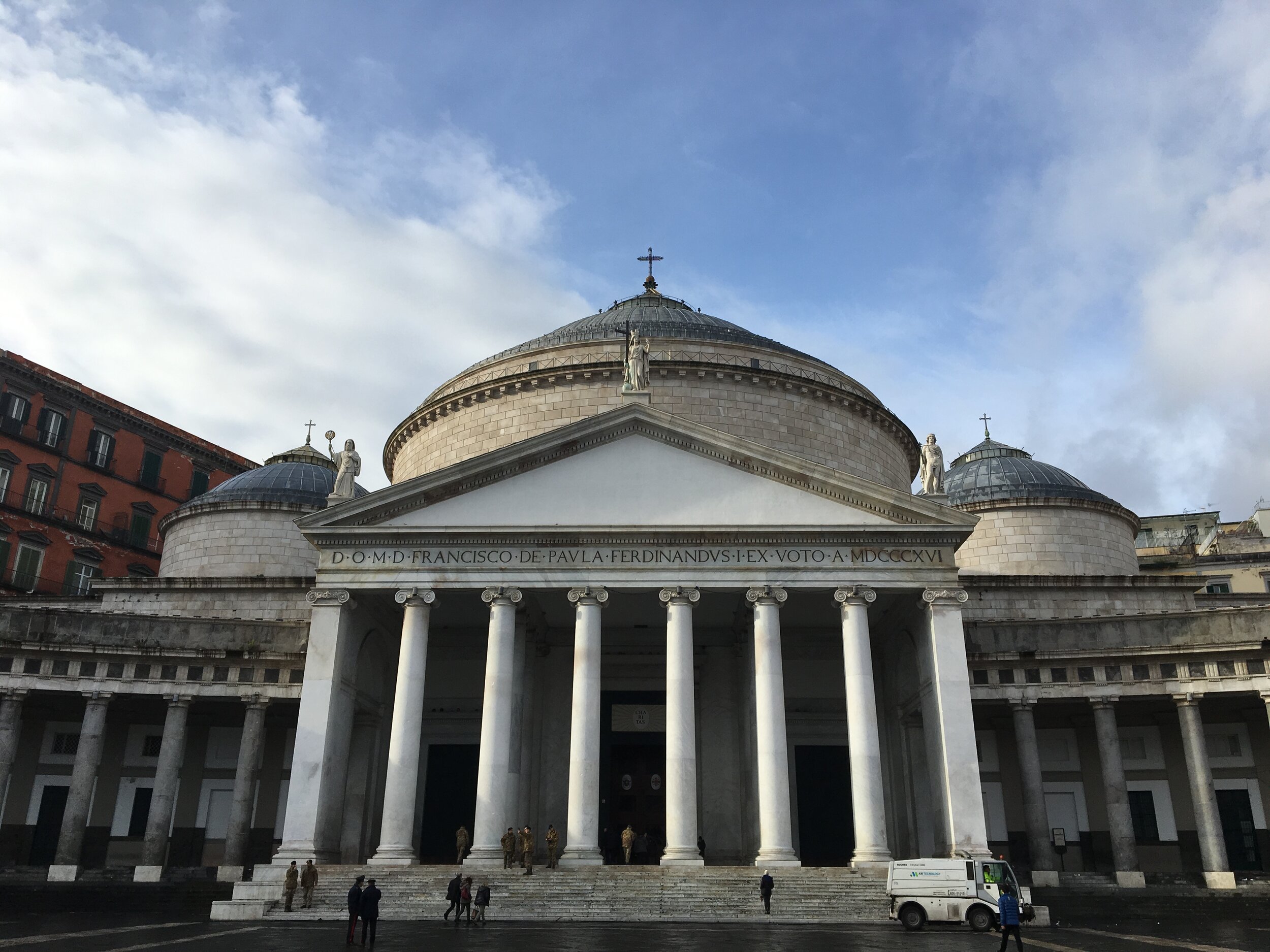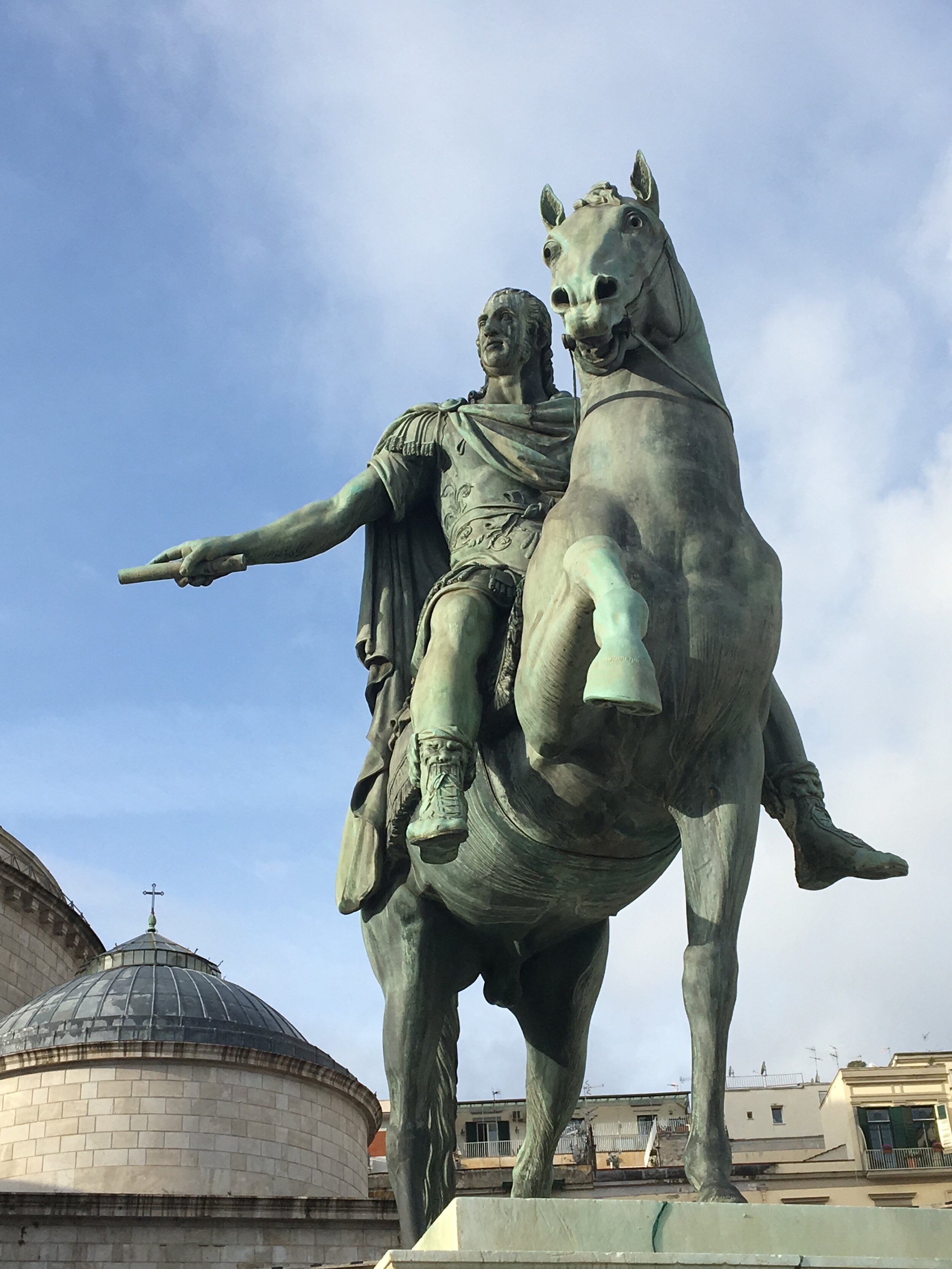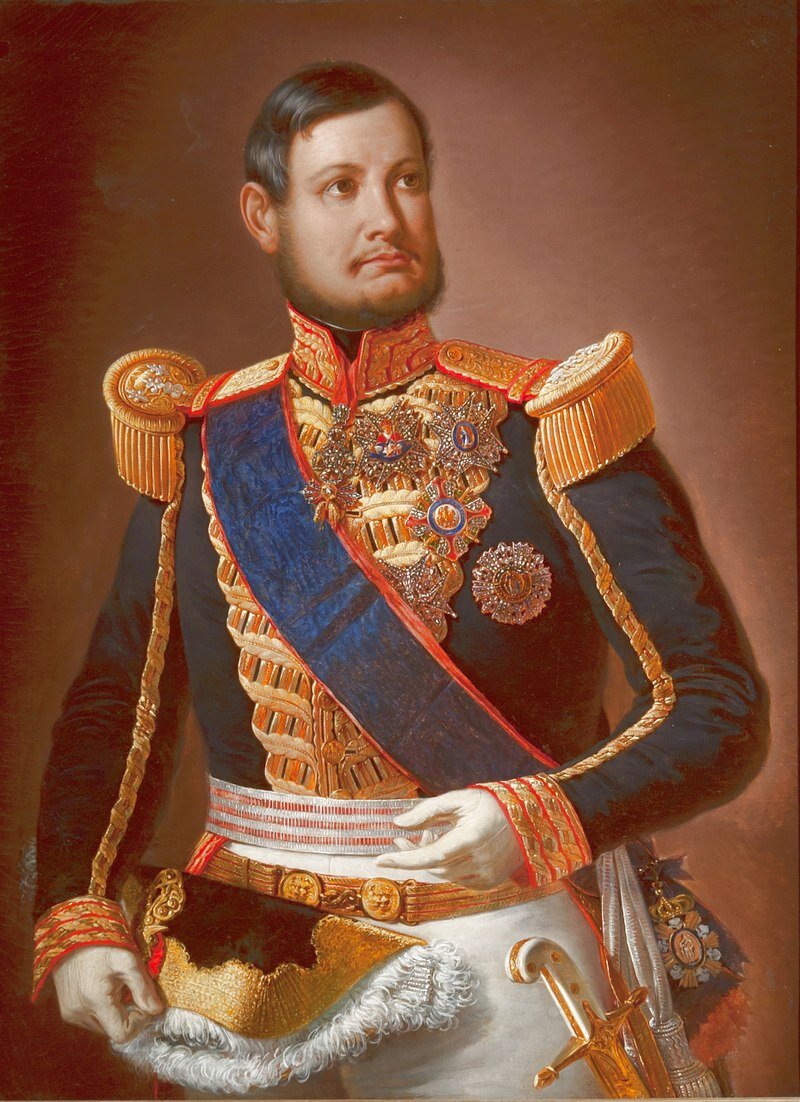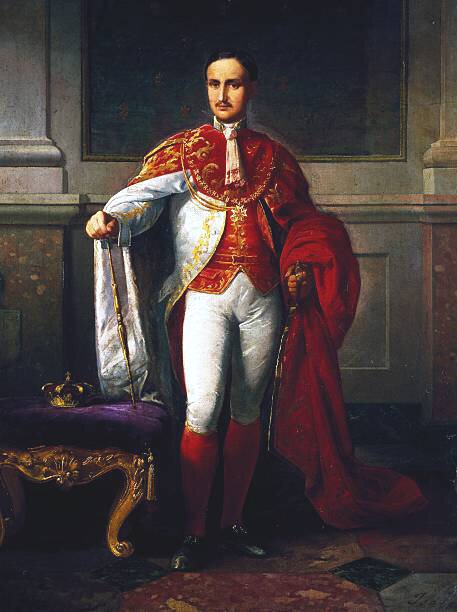A RICH AND POWERFUL CITY
THE GLORY AND THE END OF THE KINGDOM OF TWO SICILIES: HOW THE SOUTH OF ITALY BECAME LESS PROSPEROUS
VIDEO INTERVIEW TO:
Davide Brandi, professor of Neapolitan Language.
Pino Aprile, journalist and writer.
Gennaro De Crescenzo,historian and President of Movimento Neoborbonico
The map of pre-unification Italy (1861)
The Kingdom of Sardinia (Piedmont – In Italian Piemonte)
The Lombardo Veneto (Under Austrian rule)
The Principality of Parma
The Duchy of Modena
The Grand Duchy of Tuscany
The Republic of San Marino
The Papal States
The Kingdom of the Two Sicilies
The Regno delle Due Sicilie (Kingdom of the two Sicilies) was the name given to Southern Italy before unification
The Kingdom was the largest and most populous state of pre-unity Italy
Over the last one thousand years Southern Italy was ruled by various dynasties: Normans, French, Spanish and others. At one stage the whole of Southern Italy was known as the Kingdom of Sicily. Then the island of Sicily seceded and kept the name of Kingdom of Sicily, while the ruler of the mainland in his wisdom decided to keep his title of King of Sicily. When the island and the mainland were finally re-united, to avoid bruising egos the new entity was renamed the Kingdom of the two Sicilies.
This happened at the beginning of the eighteenth century. For the last 3 centuries prior to that Southern Italy had been ruled by Spain.
In 1734 one of the Spanish Princes, Carlo di Borbone, became the first monarch of the Neapolitan Bourbon dynasty (Borboni di Napoli) to rule over the Kingdom of the two Sicilies. Carlo di Borbone was passionate about architecture and he encouraged the development of many great projects the most impressive being the Royal Palace of Caserta, which has become a UNESCO world heritage site. Besides the Royal Palace of Caserta the Bourbon Kings of Naples had another three residences: PALAZZO REALE DI NAPOLI, THE ROYAL PALACE OF CAPODIMONTE, on a wooded estate 10 km north of Naples and THE PALAZZO REALE DI PORTICI situated on the slopes of Mount Vesuvius
Rulers of the Kingdom of the Two Sicilies, from 1815 until the fusion into the Kingdom of Italy in 1861: Ferdinando I, Francesco 1, Ferdinando II, Francesco II.
Here are some milestones and figures regarding Italy's most prosperous state just before controversial unification in 1860. First, the gold reserves (plus circulating currency) of the pre-unitary states' central (national) banks, based on "gold lire" in millions but valid as a measure of proportional value:
• Two Sicilies - 443.2
• Papal State - 90.6
• Grand Duchy of Tuscany - 85.2
• Kingdom of Sardinia-Piedmont - 27.1
• Venetia - 12.8
• Lombardy - 8.1
• Duchy of Parma - 1.2
• Duchy of Modena - .4
Primati nella cultura nel Sud Italia
“1735. Prima Cattedra di Astronomia in Italia
1737. Costruzione San Carlo di Napoli, il più antico teatro d’Opera al mondo ancora attivo
1754. Prima Cattedra di Economia al mondo
1762. Accademia di Architettura, tra le prime in Europa
1763. Primo Cimitero Italiano per poveri (Cimitero delle 366 fosse)
1781. Primo Codice Marittimo del mondo
1782. Primo intervento in Italia di Profilassi Antitubercolare
1783. Primo Cimitero in Europa per tutte le classi sociali (Palermo)
1789. Prima assegnazione di “Case Popolari” in Italia (San Leucio a Caserta)
1789. Prima assistenza sanitaria gratuita (San Leucio)
1792. Primo Atlante Marittimo nel mondo (Atlante Due Sicilie)
1801. Primo Museo Mineralogico del mondo
1807. Primo Orto Botanico in Italia a Napoli
1812. Prima Scuola di Ballo in Italia, gestita dal San Carlo
1813. Primo Ospedale Psichiatrico in Italia (Real Morotrofio di Aversa)
1818. Prima nave a vapore nel mediterraneo “Ferdinando I”
1819. Primo Osservatorio Astronomico in Italia a Capodimonte
1832. Primo Ponte sospeso, in ferro, in Europa sul fiume Garigliano
1833. Prima Nave da crociera in Europa “Francesco I”
1835. Primo Istituto Italiano per sordomuti
1836. Prima Compagnia di Navigazione a vapore nel Mediterraneo
1839. Prima Ferrovia Italiana, tratto Napoli-Portici
1839. Prima illuminazione a gas in una città città italiana, terza dopo Parigi e Londra
1840. Prima fabbrica metalmeccanica d’ Italia per numero di operai (Pietrarsa)
1841. Primo Centro Sismologico in Italia, sul Vesuvio
1841. Primo sistema a fari lenticolari a luce costante in Italia
1843. Prima Nave da guerra a vapore d’ Italia “Ercole”
1843. Primo Periodico Psichiatrico italiano, pubblicato al Reale Morotrofio di Aversa
1845. Primo Osservatorio meteorologico d’Italia
1845. Prima Locomotiva a vapore costruita in Italia a Pietrarsa
1852. Primo Bacino di Carenaggio in muratura in Italia (Napoli)
1852. Primo Telegrafo Elettrico in Italia
1852. Primo esperimento di illuminazione elettrica in Italia, a Capodimonte
1853. Primo Piroscafo nel Mediterraneo per l’America (il “Sicilia”)
1853. Prima applicazione dei pricìpi della Scuola Positiva Penale per il recupero dei malviventi
1856. Expò di Parigi, terzo paese al mondo per sviluppo industriale
1856. Primo Premio Internazionale per la produzione di Pasta
1856. Primo Premio Internazionale per la lavorazione di coralli
1856. Primo sismografo elettrico al mondo, costruito da Luigi Palmieri
1860. Prima Flotta Mercantile e Militare d’Italia
1860. Prima Nave ad elica in Italia “Monarca”
1860. La più grande industria navale d’Italia per numero di operai (Castellammare di Stabia)
1860. Primo tra gli stati italiani per numero di orfanotrofi, ospizi, collegi, conservatori e strutture di assistenza e formazione
1860. La più bassa mortalità infantile d’Italia
1860. La più alta percetuale di medici per numero di abitanti in Italia
1860. Primo piano regolatore in Italia, per la città di Napoli
1860. Prima città d’Italia per numero di Teatri (Napoli)
1860. Prima città d’Italia per numero di Tipografie (Napoli)
1860. Prima città d’Italia per di Pubblicazioni di Giornali e Riviste (Napoli)
1860. Primo Corpo dei Pompieri d’Italia
1860. Prima città d’Italia per numero di Conservatori Musicali (Napoli)
1860. Primo Stato Italiano per quantità di Lire-oro conservata nei banchi Nazionali (443 milioni, su un totale 668 milioni messi insieme da tutti gli stati italiani, compreso il Regno delle Due Sicilie)
1860. La più alta quotazione di rendita dei Titoli di Stato
1860. Il minore carico Tributario Erariale in Europa”
SOURCE: https://www.vesuviolive.it/cultura-napoletana/storia/7368-tutti-i-primati-napoli-regno-delle-sicilie/
https://www.inuovivespri.it/2019/03/29/pino-aprile-in-sicilia-chi-ha-reso-il-sud-una-colonia-oggi-non-ha-piu-il-controllo-di-informazione-e-formazione/
A few achievements in the Kingdom of the Two Sicilies relative to the other Italian states, particularly during the nineteenth century:
• First pension system in what became Italy (2% deduction from salaries)
• Most printing presses of any Italian city (Naples with 113)
• Lowest taxes in Italy
• Largest naval yards based on number of employees (1900 in Castellammare di Stabia)
• Largest iron and steel engineering/manufacturing plant in Italy (at Pietrarsa)
• Largest iron casting foundry in Italy (Ferdinandea in Calabria)
• Oldest continuously-active opera house in Europe, the San Carlo in Naples (1737, rebuilt in 1816)
• First university chair and department in economics (Antonio Genovesi, Naples, 1754)
• Dwarf planet Ceres first observed (Giuseppe Piazzi, Palermo 1801)
• First constitution in Italy (Sicily in 1812, later suspended)
• First steamship in the Mediterranean, the Ferdinando I (1818)
• First glass recycling program (1832)
• First steel suspension bridge in Italy (Gagliano River in 1832, components from Mongiana Works)
• First gas-fuelled public lighting system (1839)
• First railroad in Italy (1839)
• First seismic observatory in the world (Vesuvius 1841)
• First steamboat with screw propulsion in the Mediterranean (the Giglio delle Onde 1847)
• First functioning electric telegraph in Italy (1852)
• Ranked 3rd country in the world for industrial development (1st in Italy) at Paris International Exhibition (1856)
• First submarine telegraph in Europe
• First military steamship in Italy (the Ercole)
• First maritime code in Italy
• First public housing complex/estate in Italy (San Leucio near Caserta)
• Highest per capita number of physicians in Italy
• First botanical gardens in Italy (Naples and then Palermo)
• First school for the deaf in Italy
• Lowest infant mortality rate in Italy (1850-1860)
DIFFERENCE BETWEEN NORTH AND SOUTH : all started with the Unification of Italy
Garibaldi landed in Sicily in May of 1860 to start his conquest of the Kingdom of Naples (The Kingdom of the Two Sicilies). By September, he was in the city of Naples; the king, queen and residual royalist forces retreated to the fortress at Gaeta for their “last stand,” a siege that lasted from November 1860 to February 1861.



